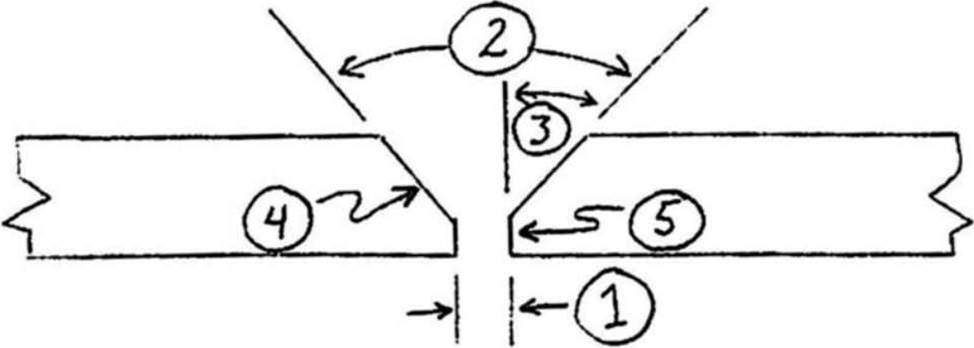API API-577 Übungsprüfungen
Zuletzt aktualisiert am 24.04.2025- Prüfungscode: API-577
- Prüfungsname: Welding Inspection and Metallurgy Exam
- Zertifizierungsanbieter: API
- Zuletzt aktualisiert am: 24.04.2025
Question #11
Steels usually require both preheat and PWHT if they have a carbon equivalent higher than:
- A . 0.35
- B . 0.45
- C . 0.50
- D . 0.55
Question #12
Codes/standards sometimes specify impact testing of weldments at minimum design metal temperatures to:
- A . Assure that the welded material has sufficient yield strength to avoid brittle fracture.
- B . Assure that the welded material has sufficient ductility to assist brittle fracture.
- C . Assure that the welded material has sufficient toughness to resist brittle fracture.
- D . Assure that the welded material has sufficient tensile strength to avoid failure at design loads.
Question #13
Refer to the following diagram:

Item#4 represents:
- A . bevel face.
- B . bevel angle.
- C . groove angle.
- D . groove face.
Question #14
As a result of welding, metals with a high coefficient of thermal expansion are:
- A . More susceptible to distortion during welding.
- B . Less susceptible to cracking during welding.
- C . More susceptible to brittle fracture.
- D . Less susceptible to brittle fracture.
Question #15
What is a discontinuity?
- A . An interruption in the normal physical structure of a material.
- B . An imperfection which is detectable with NDE.
- C . The response or evidence from the application of NDE.
- D . A departure of a quality characteristic from its intended condition.
Question #16
Any electrodes that have become wet:
- A . Should be placed in a warming oven only if they are low-hydrogen.
- B . Should not be used for jobs requiring low-hydrogen electrodes.
- C . Should be used at a higher amperage than recommended by the manufacturer.
- D . Should be discarded.
Question #17
A-number groupings are based upon the:
- A . Chemical composition of the deposited weld metal.
- B . Comparable base metal ultimate strength values.
- C . Weldability characteristics of the metal.
- D . Type and strength of base metal.
Question #18
Which of the following weld flaws is described as a subsurface terrace and step-like crack weakened by dispersed planar-shaped inclusions?
- A . Lamellar tearing
- B . Hydrogen cracking
- C . Sulfite stringers
- D . Hot cracking
Question #19
Which of the following is not usually an essential variable on a WPS form?
- A . Welding technique
- B . Groove design
- C . Base metal
- D . Welding position
Question #20
Which of the following is a commonly accepted limitation of flux core arc welding (FCAW)?
- A . It is more sensitive to drafts and wind than GMAW.
- B . It has lower deposition rates than SMAW.
- C . Shielding must always be provided by an externally supplied gas.
- D . Large volumes of welding fumes are generated.
